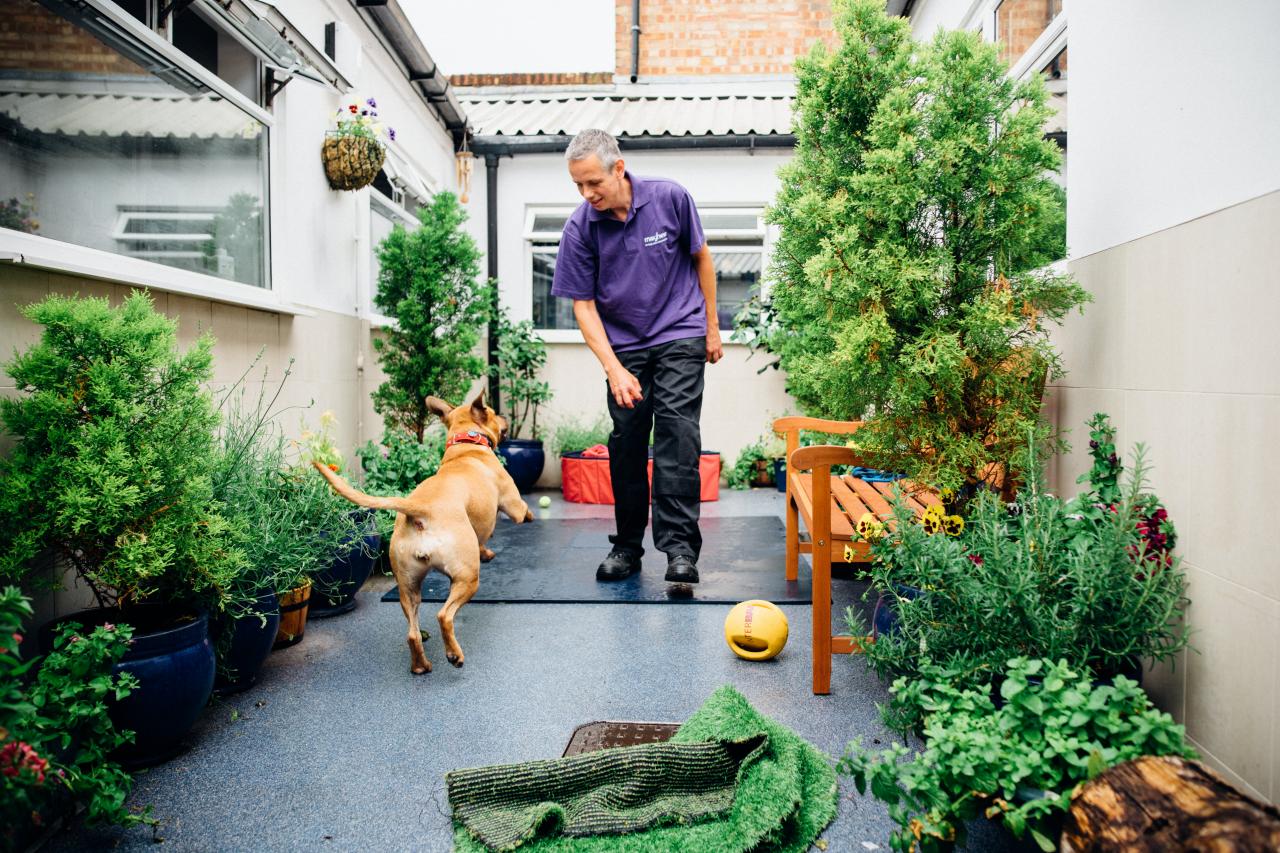#dog #yard #happy #pets #space
Many families with dogs give up the dream of having a beautiful yard to enjoy during the warmer months of the year, but the reality is dogs and lush outdoor spaces can co-exist
The 1st thing you will want to do is create dog-friendly spaces in your yard, such as a play area, water feature, perhaps a marking post, and if you really think big, a sensory garden aka The Happy Space.
Once that’s done, it’s time to design space for humans while keeping your dog in mind, such as a walkway around the perimeter of your yard so your dog can patrol without damaging the landscaping.
I 1st heard of customized sensory gardens for dogs when Steve Hill discussed several he had designed during a zoopharmacognosy discussion (click here for Caroline Ingraham’s Instagram interview about starting a sensory garden).
Avoid toxic plants and chemicals: when choosing what to grow in your garden, keep in mind that some plants are toxic to pets. Veggies you should avoid altogether or keep safely away from your dog include eggplant, tomato, potato, onions, and rhubarb. Plants that are potentially toxic include foxglove, deadly nightshade, and larkspur. Trees to avoid include almond and walnut trees, cherry trees, and trees that grow fruit that contains pits.
Keep in mind that the insecticides, herbicides, pesticides, and fertilizers many people apply in the spring to bring their lawns and gardens back to life contain chemicals that are dangerous for pets.
Also, focus of Organic lawn care is to produce a healthy lawn and soil using natural organic fertilizers. An organic lawn has grass roots grown deep into the soil, which makes them less vulnerable to drought, weeds, insects, disease, and other stressors.
Have a healthy day, Keep the Faith!









